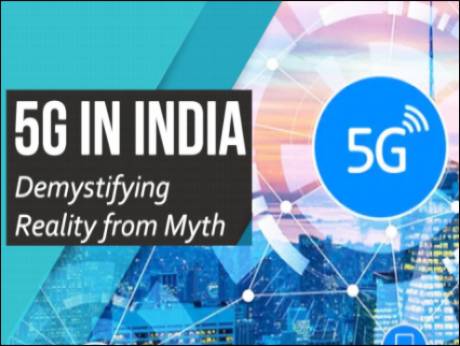
The CUTS Centre for Competition, Investment & Economic Regulation (CUTS CCIER) part of the international Consumer Unity and Trust Society family, recently published a report -- 5G IN INDIA Demystifying Reality from Myth. It was a follow-up to a webinar on the subject held in July. We bring you the foreword to the report by Dr Arogyaswami J Paulraj, Professor Emeritus, Stanford University and Chair of the Task Force of the (Indian) High Level Government Forum for 5G 2020.
We also bring you links to the full report in PDF as well to Dr Paulraj’s presentation at the webinar, on the Promise of 5G.
October 1 2020: The widespread availability of mobile wireless networks in the past two decades has transformed India. Our network evolved from 2G in the early 2000s, to 3G in the late 2000s and 4G in the past five years. 5G is the next generation of cellular communications technology with both evolutionary and revolutionary services that can be even more valuable to India.
5G promises more than High-Speed phone connectivity adding new Machine Type and High Reliability and Low Latency communications technology. These technologies can become a Virtual infrastructure to strengthen India’s physical infrastructure in transportation, agriculture, health, and manufacturing sectors. 5G can unleash new economic opportunities and societal benefits giving it the potential for being a transformational technology. It can help India leapfrog the traditional barriers to development adding US$1trillion economic impact by 2035.
Currently, only the high-speed connectivity component of 5G technology is ready and has started rolling out globally since mid-2019. Deployment is still in its infancy with 80 million subscribers. 5G services, for now, are deployed in the non-standalone mode and depending on the 4G network to function. Even when 5G becomes fully independent, most operators will support 4G, 3G, and 2G connectivity to cater to coverage holes and phones that are not 5G capable. The Machine Type and High Reliability and Low Latency Communications technology segments of 5G will take another two years to be deployment-ready.
The Government of India formed a High Level Forum to recommend policy initiatives for 5G. The Forum submitted a report in August 2018 with several key policy recommendations covering spectrum allocation, regulatory reforms, educational initiatives, and technology development. The Forum recognised that 5G deployment faces special challenges because of the need to serve a range of non-phone type applications where the user community will be new to wireless technology.
Also, due to the use of higher frequency bands, 5G will need a higher network density increasing network investments. 5G deployment will also need special policy measures to ensure it reaches the economically weaker and the rural segments of our society. It is noteworthy that India’s current 4G deployments also need significant enhancements.
The Report has summarised public perceptions of 5G deployment and use cases, as well as offering parallel perspectives from industry experts in the field. There is a wide gap between the two, highlighting the need to vigorously engage the public to increase the awareness of the opportunities and the challenges of this new technology. A well-informed public will help influence both public policy on 5G deployment and promote India’s 5G technology eco-system.
The Promise of 5 G: Presentation by Dr A Paulraj at the webinar.
Full text of the CUTS CCIER report 5G in India Demystifying reality from myth